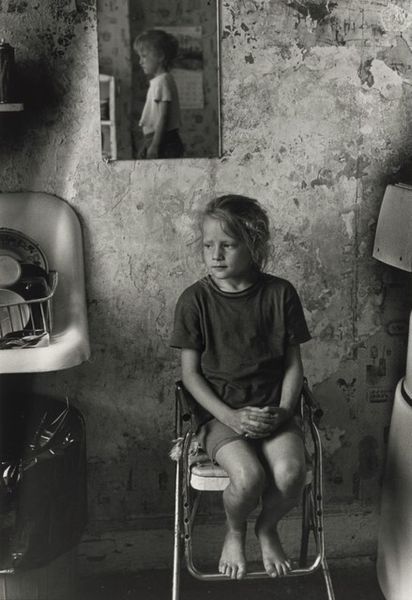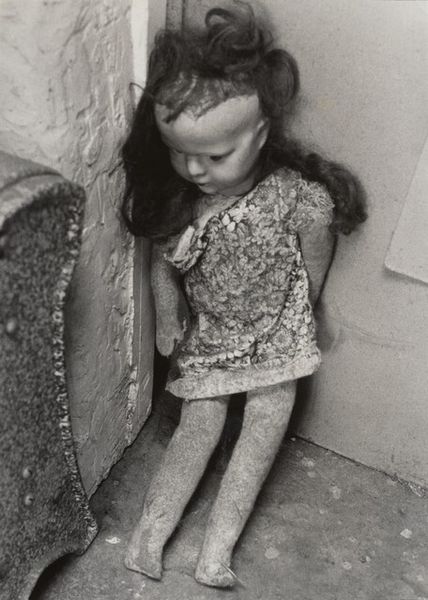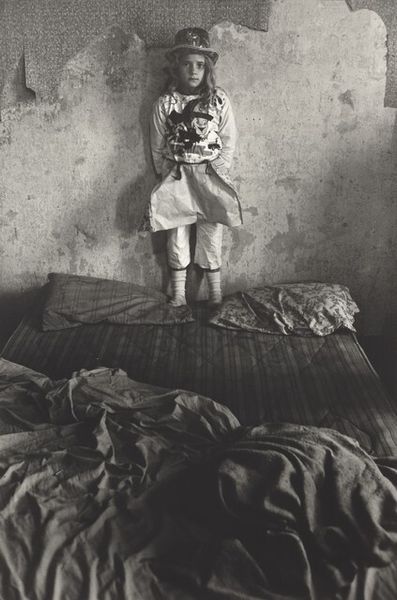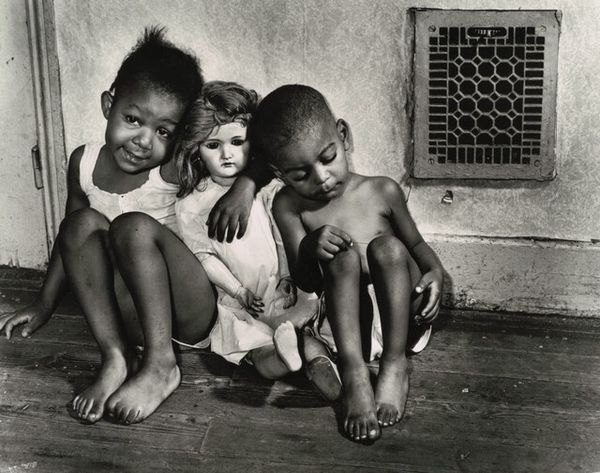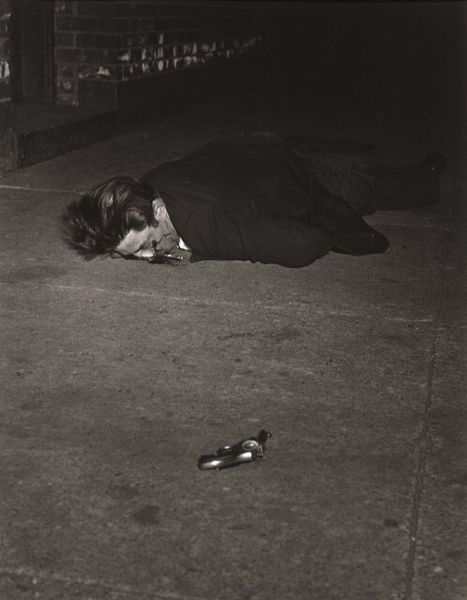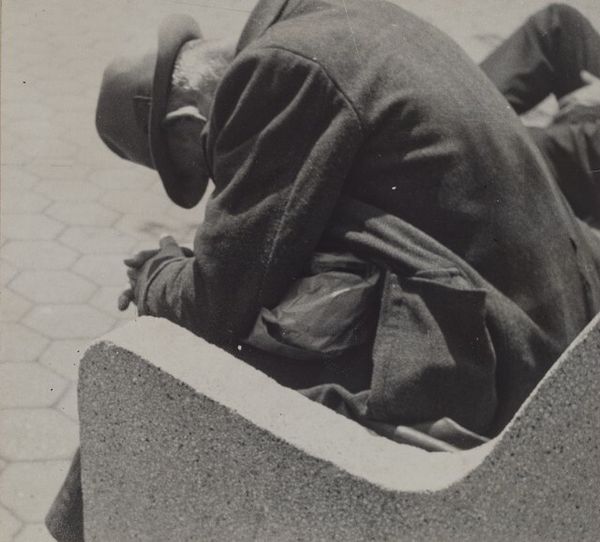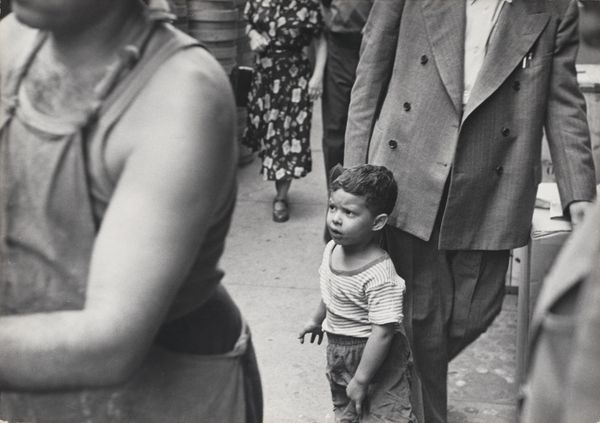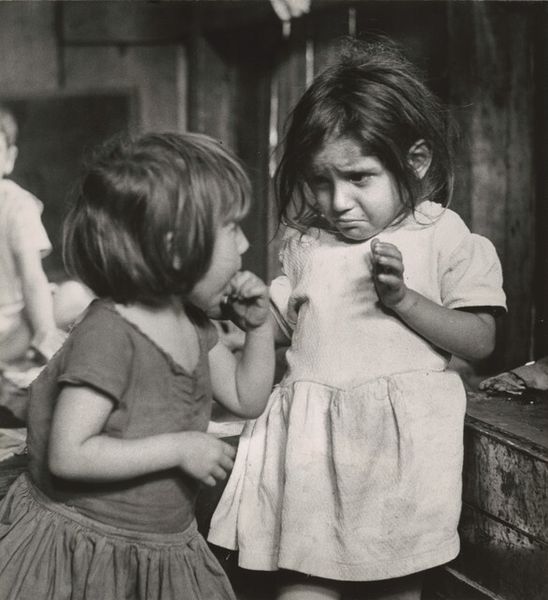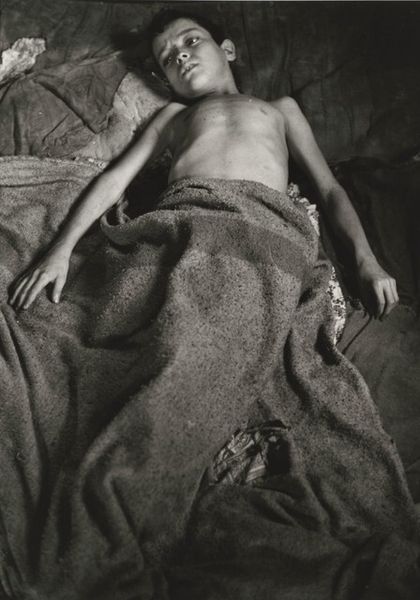
#
wedding photograph
#
black and white photography
#
cool tone monochrome
#
centre frame
#
black and white format
#
black and white theme
#
black and white
#
monochrome photography
#
monochrome
#
exhibition
Dimensions: image: 48.3 × 35.2 cm (19 × 13 7/8 in.)
Copyright: National Gallery of Art: CC0 1.0
Editor: Here we have Gordon Parks' "Luzia, the Favela" from 1961, a stark black and white photograph. There's a sense of quiet vulnerability to it. The child’s pose, the worn sandals... what stands out to you most? Curator: I see the image as an articulation of labor and lived conditions, particularly within the context of a Brazilian favela. Parks uses the stark materiality of the scene – the roughly hewn wood the child rests on, the worn textures of her clothing and skin – to convey the daily realities of poverty and marginalization. Consider how these elements point not just to an individual’s experience but to broader structures of production and consumption. Editor: So, it's less about the emotional reading and more about the material realities portrayed? Curator: Exactly. Where did the wood come from? Who made those sandals and under what conditions? Parks compels us to consider these questions. What is being produced here, both materially and socially? It transcends just depicting a sad scene; it's actively critiquing the socioeconomic forces that shape Luzia's world. What social statement do you believe that Parks wants to achieve through this work? Editor: That shifts my understanding entirely. I was initially focused on the individual child. Now I'm thinking about resource allocation and labor connected to even the simplest items. Curator: And that connection between the micro – the child's individual experience – and the macro – the broader economic system – is precisely what Parks, through the material reality captured by his lens, prompts us to examine. Editor: It’s fascinating to reconsider photography as a document not just of a scene but of production itself. I'll never see images the same way. Curator: Exactly. Examining art through a materialist lens allows us a richer, more nuanced understanding of power dynamics and their effect on the people being portrayed.
Comments
No comments
Be the first to comment and join the conversation on the ultimate creative platform.
